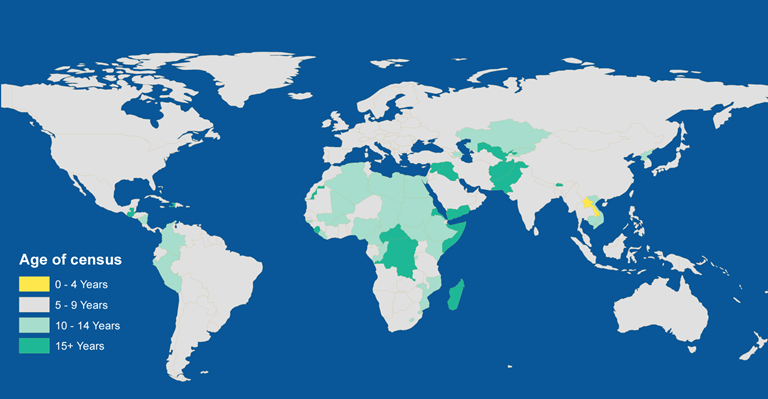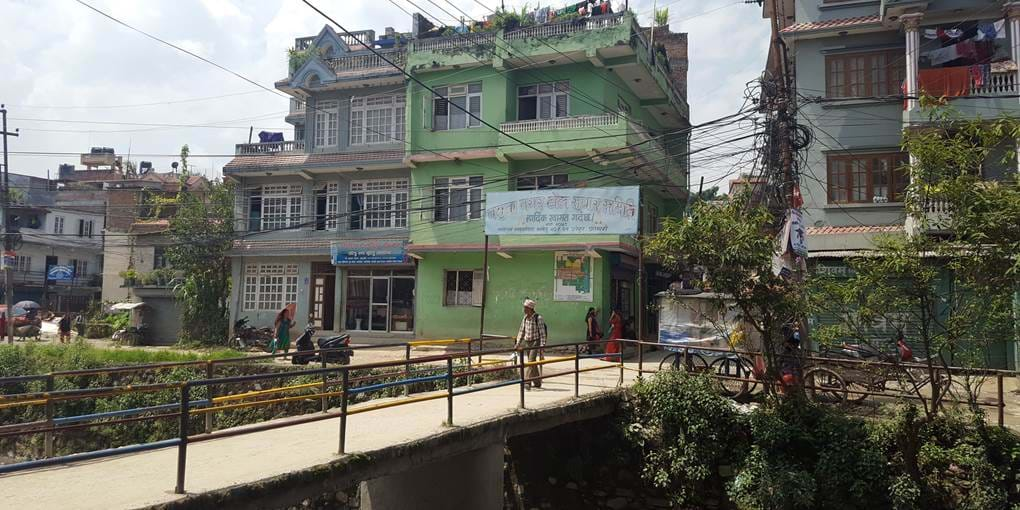GridSample is a tool to select clusters for household surveys using gridded population data.
To find out more about GridSample, watch our interview with GridSample creator Dana R Thomson about the genesis and impact of gridded population sampling with GridSample.
Why use GridSample?
Avoiding outdated or inaccurate census sample frame
GridSample relies on gridded population estimates, thus providing an accurate and up-to-date sample frame when census is outdated or inaccurate.
Standard “top-down” gridded population datasets, such as WorldPop Global, reflect the population totals in census data. While census population totals may be inaccurate, the relative distribution of the population in WorldPop Global may be more accurate than the original census data, and thus serve as a better sample frame. This is because gridded population datasets disaggregate population totals to areas with new population growth (reflected in new housing developments, roads, and changes in land cover) and in informal settlements not originally counted in the census.
Map: last updated, April 2019

Generating custom-sized clusters
In standard census-based sampling, cluster size is determined by the size of census enumeration areas, with each cluster containing approximately 500 people. When the sample frame is generated from a gridded population dataset such as WorldPop Global, there is good reason to consider clusters of different sizes.
Asking clusters to contain a target number of population will result in larger areas for rural areas and smaller clusters for urban areas as shown in all of the illustrations. Notice, too, that asking for a larger target number will, as a consequence, result in containing areas that are generally larger than for medium or smaller target numbers. But in all cases it is possible to have really small resulting areas (even just one cell big) for areas that are densely populated.
Small clusters
Small clusters (~75 people each) can be generated to perform one-stage sampling. One-stage sampling in which all eligible households in the cluster are interviews, is an attractive option in complex settings where large numbers of vulnerable and mobile populations live. One-stage sampling allows for the household listing and interviews to be conducted on the same day, removing the months, or even years, long delay between listing and interviewers faced in standard multi-stage sampling.
Medium clusters
Medium clusters (~500 people each) are approximately the size of a census enumeration area and can be used to replicate standard household survey designs and methods with a gridded population sample frame.
Large clusters
Large clusters (~1,200 people each) are an attractive option in settings where the census is extremely outdated, for example more than 15 years old. WorldPop Global estimates are generally more accurate as its 100m X 100m grid cells are aggregated into larger units. The use of larger areas in the sample frame helps to smooth out errors in the gridded population dataset.

Using spatial oversampling to improve small area estimates
Spatial oversampling helps improve small area estimates with survey results.
In household surveys, it is common to collect latitude-longitude coordinates of clusters, and to use survey results to generate small area estimates in administrative areas smaller than strata. Small area estimates based on standard samples of the population distribution are prone to reduced accuracy in remote rural areas, and within highly heterogeneous urban populations.
Spatial oversampling ensures spatial coverage of the sample and a base-level of accuracy in small area estimates across the study area.

